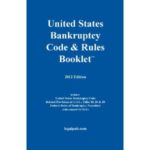 If there’s a bright spot in the midst of this recession, it’s the thrill bankruptcy lawyers get in stripping mortgage liens from underwater property.
If there’s a bright spot in the midst of this recession, it’s the thrill bankruptcy lawyers get in stripping mortgage liens from underwater property.
Action taken at the depths of home values will benefit clients long into the future if the client can hang on to the home til things recover.
Yet I hear lawyers wrestling with lien stripping worries revolving around mismatches between who’s on title to the property; who is liable on the debt; and whether the necessary persons are in bankruptcy.
Let me suggest that the issue is simpler than that and invite you to tell me if I’m missing something
It’s all about the property
Put simply, my proposition is that the only one of the questions posed above that matters is: does the bankruptcy estate include all of the property from which you want to strip a lien?
Or, put another way, in the affirmative, a bankruptcy court can only strip a lien from property of the estate.
Lien stripping is grounded in the idea of an allowed secured claim. Section 506(a)(1) provides:
An allowed claim of a creditor secured by a lien on property in which the estate has an interest, … is a secured claim to the extent of the value of such creditor’s interest in the estate’s interest in such property,
Notice that secured status has no connection to whether it is the debtor who is liable on the underlying claim. The focus is on the property which is property of the estate.
Lien stripping in practice
Suppose the debtor inherited the real property in question from his grandmother subject to liens in favor of her creditors. In the debtor’s bankruptcy case, a lien securing the grandmother’s promise to pay Big Fat Bank is just as strippable as if the debtor was the borrower. As long as the property which is collateral for the debt is before the court, the lien is subject to valuing, and stripping.
Contrast a case where the debtor is a co tenant with a sibling on the same inherited house. Both halves of the house are subject to the bank’s lien. If only one heir files bankruptcy, only that heir’s interest in the house is property of the estate, and the court can only strip the lien from the fraction of the property that is in the bankruptcy estate.
The more common fact pattern seems to be that one spouse is on title to the property and the other spouse is liable on the note. If applicable law brings all the real estate into the bankruptcy estate, then who took the loan is irrelevant. It’s strippable to the extent the collateral is property of the estate.
Get this problem pinned down, and life as a bankruptcy lawyer is easier.
Image courtesy of wikimedia and some ancient Greek.







